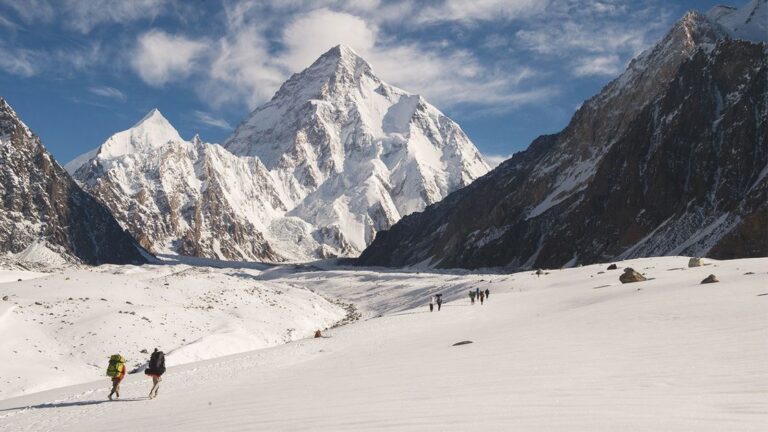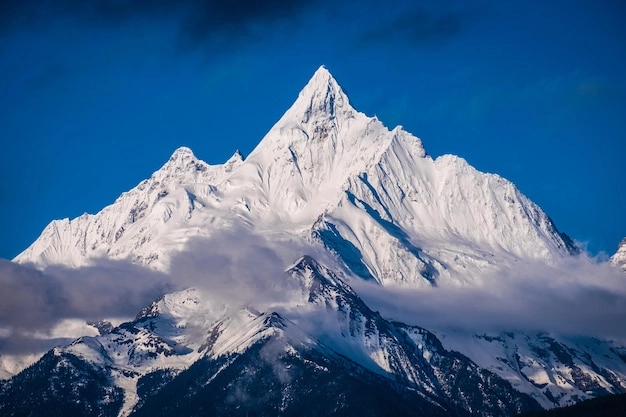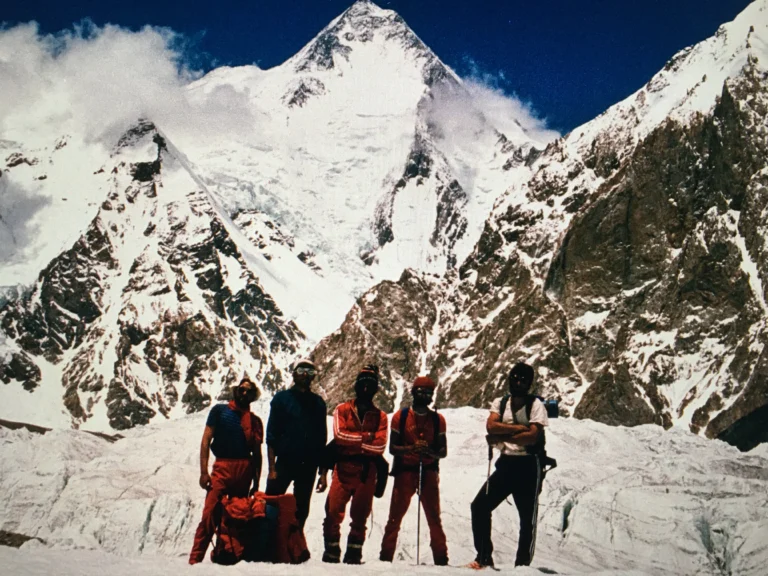Winter K2 2025: Who’s Attempting the Next Historic Climb?
K2, standing tall at 8,611 meters (28,251 feet) in Pakistan’s Karakoram Range, is the second-highest mountain in the world and one of the most formidable. Known as the “Savage Mountain,” K2’s reputation for danger is amplified in winter, when extreme cold, high winds, and technical challenges make it a near-impossible feat. The first winter ascent of K2, achieved on January 17, 2021, by a team of Nepalese climbers, was a historic milestone that captured the world’s attention. As we approach Winter K2 2025, the mountaineering community is buzzing with anticipation: who will attempt the next historic climb on this legendary peak?

The Allure of Winter K2 2025: A New Chapter in Mountaineering
Winter ascents of K2 are the ultimate test of human endurance, skill, and teamwork. For decades, climbers dreamed of summiting K2 in winter, but the mountain’s brutal conditions thwarted every attempt until 2021. Led by Nirmal Purja and Mingma Gyalje Sherpa, the 10-member Nepalese team’s success marked the final eight-thousander to be conquered in winter, a feat celebrated globally (BBC News). Now, as we look to Winter K2 2025, the question looms: who will dare to challenge the Savage Mountain in its harshest season? While no expeditions have been publicly announced for this winter, the legacy of K2 continues to draw the world’s most ambitious climbers.
The Significance of Winter K2 Climbs
Winter K2 ascents are significant for several reasons. They push the boundaries of what’s possible in mountaineering, requiring climbers to endure temperatures as low as -60°C (-76°F), fierce winds, and heavy snowfall. These conditions transform K2’s already treacherous routes into a labyrinth of ice and snow, demanding exceptional technical skills and mental fortitude (Jasmine Tours).
Moreover, winter climbs are a logistical masterpiece. Teams must plan meticulously, often spending weeks at base camp waiting for a weather window. The 2021 team’s success was a testament to their collaborative approach, where climbers from different groups united for a common goal, sharing resources and support. This spirit of unity has set a new standard for high-altitude expeditions.
Finally, winter K2 ascents carry immense prestige. They are a rare achievement, with only 10 climbers having summited in winter to date. The allure of joining this elite group drives climbers to prepare for challenges like Winter K2 2025, even if specific plans remain under wraps.

Team Compositions: Building the Perfect Expedition
A winter K2 expedition requires a team of highly experienced climbers, often with prior eight-thousander summits and winter climbing expertise. The 2021 team included seasoned Sherpa climbers, such as Mingma Gyalje Sherpa and Nirmal Purja, whose high-altitude experience was critical (Explorersweb). Future teams, including those potentially planning for Winter K2 2025, will likely follow a similar model, prioritizing climbers with proven track records.
Teams typically include:
Lead Climbers: Responsible for route-finding and decision-making.
Sherpa Support: High-altitude porters who fix ropes and carry supplies.
Logistics Experts: Manage base camp operations and weather monitoring.
Collaboration is key. The 2021 team’s success came from pooling resources across multiple groups, a strategy likely to be emulated in future attempts.
| Role | Responsibilities | Example from 2021 Team |
| Lead Climber | Route-finding, summit push decisions | Nirmal Purja, Mingma Gyalje Sherpa |
| Sherpa Support | Fixing ropes, carrying supplies | Mingma David Sherpa, Gelje Sherpa |
| Logistics Expert | Weather monitoring, base camp management | Chhang Dawa Sherpa (SST Leader) |
Climbing Strategies: Conquering the Savage Mountain
Winter K2 expeditions employ specific strategies to navigate the mountain’s challenges. Teams establish multiple camps at increasing altitudes, typically:
Base Camp (5,150m): The staging area for logistics and acclimatization.
Camp 1 (6,050m): The first high-altitude camp, often on the Abruzzi Spur.
Camp 2 (6,700m): A critical staging point for higher camps.
Camp 3 (7,350m): Positioned below the Black Pyramid.
Camp 4 (7,800m): The final camp before the summit push.
Fixed ropes and ladders are used to secure routes, particularly in dangerous areas like the Bottleneck, a narrow couloir near the summit prone to serac collapses (Apricot Tours). Climbers also rely on supplemental oxygen for the summit push, though some, like Nirmal Purja, have summited without it, showcasing extraordinary endurance.
The 2021 team’s strategy of waiting for a rare weather window and moving quickly through the upper camps was pivotal. Future expeditions, including those for Winter K2 2025, will likely adopt similar tactics, balancing speed with safety.

Weather Challenges: The Ultimate Adversary
Winter weather on K2 is the greatest obstacle climbers face. The Karakoram Range is influenced by the jet stream, which brings winds up to 200 km/h (124 mph), making climbing above 7,000 meters nearly impossible (Jon Kedrowski). Low visibility, heavy snowfall, and extreme cold increase the risk of frostbite, avalanches, and disorientation.
Teams rely on detailed weather forecasts to identify brief summit windows, often waiting weeks at base camp. The 2021 team’s success hinged on seizing a rare calm period, a strategy future climbers will need to replicate. For Winter K2 2025, weather will remain the deciding factor, requiring patience and adaptability.
Comparing Winter K2 2025 to Previous Attempts
The 2021 winter ascent was a breakthrough after decades of failed attempts. Early efforts, such as the 1987 Polish expedition, were defeated by severe weather and logistical challenges. The Polish “lords of winter” pioneered winter ascents of other eight-thousands but found K2 insurmountable (Wikipedia).
Key differences in the 2021 ascent:
Experience: The team included climbers with multiple K2 summer summits, unlike earlier teams with less specific experience.
Collaboration: The 2021 climbers worked as a unified group, sharing ropes and resources, in contrast to competitive earlier attempts.
Technology: Advances in gear, such as improved insulation and communication devices, enhanced safety and coordination.
Timing: The team capitalized on a rare weather window, a critical factor absent in many prior attempts.
Future attempts, including potential Winter K2 2025 expeditions, will build on these lessons. Climbers will need to combine experience, teamwork, and cutting-edge technology to succeed.
| Aspect | Pre-2021 Attempts | 2021 Ascent | Winter K2 2025 (Projected) |
| Team Experience | Varied, often less K2-specific | Extensive K2 summer experience | Likely to include K2 veterans |
| Collaboration | Competitive, fragmented | Unified, resource-sharing | Expected to emphasize teamwork |
| Technology | Basic gear, limited communication | Advanced insulation, reliable comms | Likely to use latest gear innovations |
| Weather Strategy | Often rushed, poor timing | Patient, seized rare window | Will require precise weather forecasting |

The Road Ahead: Winter K2 2025 and Beyond
As of April 2025, no winter K2 expeditions for this year have been publicly announced. However, mountaineering plans are often kept private until closer to the expedition date, and the allure of K2 ensures that climbers are likely preparing for Winter K2 2025 or future seasons. Nepalese climbers, buoyed by their 2021 success, may lead the charge, with teams potentially including veterans like Mingma Gyalje Sherpa or Nirmal Purja (Elite Exped).
Other nations, inspired by the 2021 feat, may also field teams. The Feeding the Rat Expeditions website hints at K2 winter ascents from the China north side, though specific 2025 plans are unclear (Feeding the Rat). Regardless of who attempts it, the next winter K2 climb will be a high-stakes endeavor, requiring meticulous preparation and a bit of luck.
The significance of Winter K2 2025 lies in its potential to further the legacy of winter mountaineering. Each attempt, successful or not, adds to the collective knowledge of how to conquer the Savage Mountain in its most unforgiving season.
Conclusion
Winter K2 2025: Who’s Attempting the Next Historic Climb? is a question that captures the excitement and uncertainty of one of mountaineering’s greatest challenges. While specific teams for 2025 remain unconfirmed, the 2021 Nepalese ascent has set a high bar, demonstrating that with skill, teamwork, and determination, even the impossible can be achieved. As climbers around the world prepare to face K2’s winter wrath, the mountain remains a beacon of human ambition and resilience.
FAQs
- What makes K2 so difficult to climb in winter?
K2’s winter challenges include extreme cold, high winds, low visibility, and technical routes. The mountain’s high fatality rate and unpredictable conditions make it a formidable adversary. - How many people have summited K2 in winter?
Only 10 climbers, all from the 2021 Nepalese team, have summited K2 in winter, making it one of the rarest mountaineering achievements. - What are the key differences between summer and winter K2 climbs?
Winter climbs face harsher weather, shorter daylight, and more technical routes due to ice and snow. They require more equipment and patience for weather windows. - Why is the first winter ascent of K2 significant?
It completed the winter ascents of all 14 eight-thousanders, showcasing Nepalese climbers’ expertise and the power of collaboration.
Are there any plans for winter K2 expeditions in 2025?
No public announcements have been made for Winter K2 2025, but climbers may be planning privately, inspired by K2’s enduring challenge.






